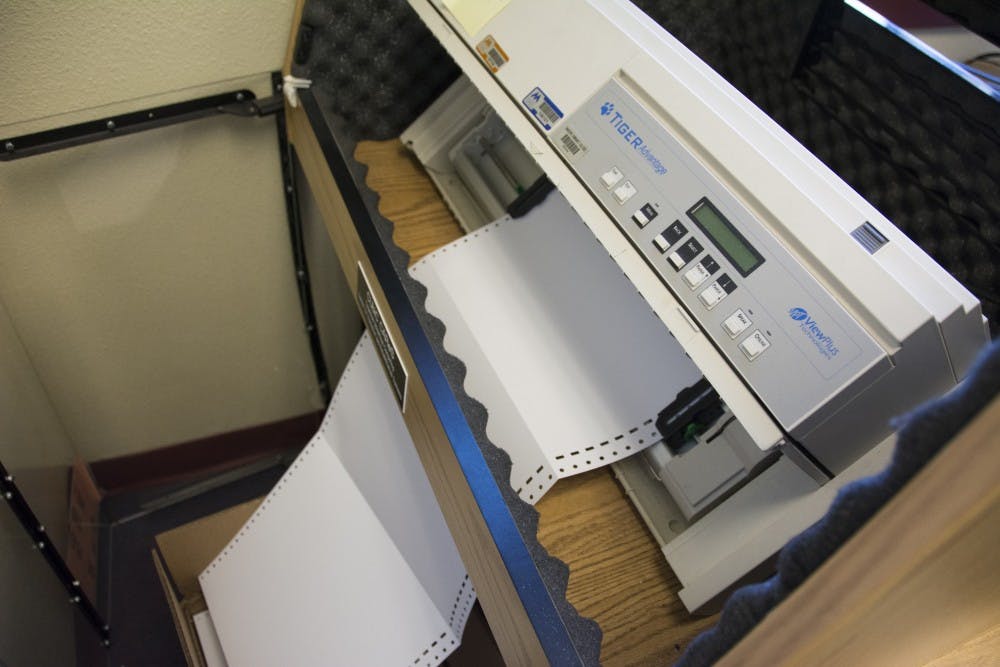In the first floor of the Matthews Center, some of the most cheerful students and faculty are hard at work cutting up textbooks.
The students are a part of the Alternative Format Services lab, which converts crucial information bound in books to other formats for disabled students who may not be able to use the conventional textbook for their classes.
The lab is a part of the Disability Resource Center, which has a mission to “enhance the quality of a student’s educational experience by ensuring accessibility for all programs and services.”
The lab was integrated into ASU in 1990, after the federal government passed the Americans with Disabilities Act. The act essentially said any business, school or company that received federal funding was obligated to provide resources for disabled people in the form of accessibility.
Since then, the lab has grown from one or two student workers to about thirty. The number of students requesting the lab’s services has increased to roughly 700 per semester.
There are several different formats that the lab converts to, and the process can be time consuming. Once the textbooks are received, the binding is chopped off and the pages are scanned into a computer. The electronic material can then be reformatted into braille or other more accessible forms.
Diane Garvey is a staff member who works with these students, by providing support and outreach.
"I work to provide educational training to other departments on campus such as academic advising, graduate studies, and the first year peer mentoring program,” Garvey says.
She said students are an integral part of the lab and they often convert much of the textbook material themselves. A popular format is eText, which requires workers to type out all the information and describe images that are in the textbook.
Sairah Furness, a junior studying biomedical engineering, is a team lead in the lab and explains that new technology has been a game changer.
“We’ve brought in a few new things since I started last spring just because of all the collaboration," Furness describes. "Some things have worked immensely and the students know it, and they see it.”
Mattie Leavitt, manufacturing engineering junior, trains many of the student workers on converting to eText and makes corrections to converted files.
“We use a program called OmniPage which takes PDFs and converts PDF textbooks and puts it all in a Word document," Leavitt said. "Because it is a text recognition software, it doesn’t always get everything correct so that’s where I come in. I make the necessarily changes to edit it.”
Garvey said the lab is relatively unknown.
“We’re like a secret down here,” she said.
Secret or not, the lab’s impact is felt strongly by the students who request its services.
Related links:
Open-source alternatives bring flexibility to textbooks
Students take on textbook prices
Reach the reporter at sdave1@asu.edu or follow @simdave15 on Twitter.
Like The State Press on Facebook and follow @statepress on Twitter.




